Important Formulas: Data Through Pictures | Mathematics (Maths Mela) Class 5 - New NCERT PDF Download
| Table of contents |

|
| Introduction |

|
| Collecting Data |

|
| Reading and Understanding Tables |

|
| Pictographs |

|
| Bar Graphs |

|
| Pictograph vs Bar Graph |

|
| Conclusion |

|
Introduction
Data handling = collecting, organizing, and showing information.
We use tables, pictographs, and bar graphs to make data clear.
Graphs help us:
Compare data visually
Spot patterns quickly
Understand real-life situations (time use, food wastage, vehicles, etc.)
Collecting Data
Collecting data = gathering information about people, things, or activities.
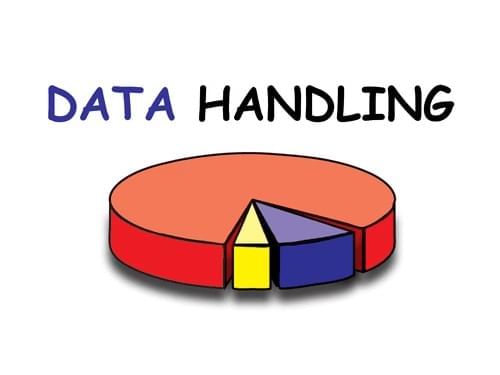
Example: asking friends “How many hours do you watch TV?”
Data is recorded in a table with rows and columns for easy reading.
Reading and Understanding Tables
A table organizes numbers neatly.
Rows and columns show different details.
We can count, add, or compare quickly.
Pictographs
Definition: Showing data using pictures or symbols.
Each picture = some number of items.
Example: 1 book picture = 5 books.
Key Parts of a Pictograph
Title: tells the topic.
Labels: what is being counted.
Symbols/Pictures: the icons used.
Scale: value of each picture.
Key: small note explaining the scale.
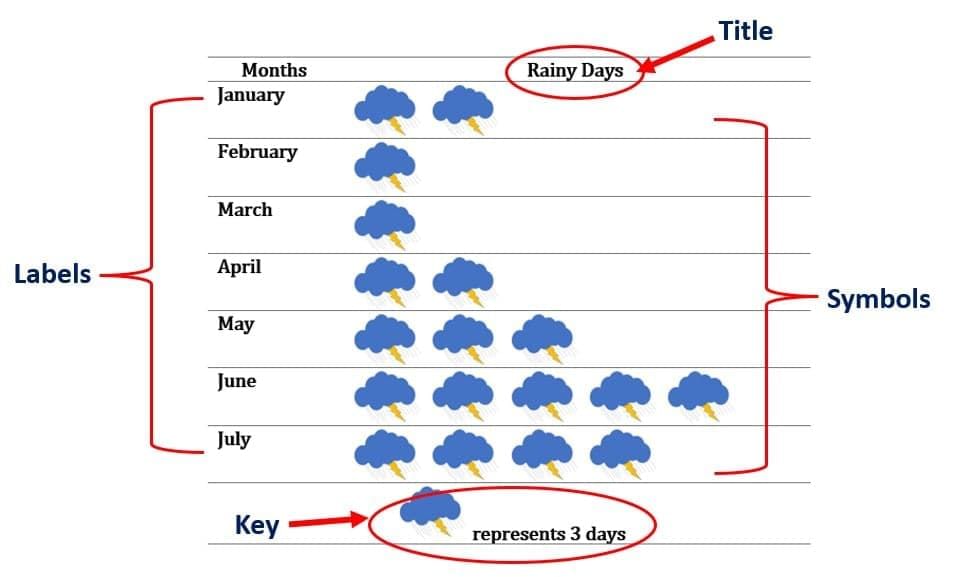
Scales
Small data → scale 1 picture = 1 item.
Large data → scale 1 picture = 5, 10, or 20 items.
Choosing the right scale makes graphs neat.
Why Pictographs Are Useful
Easy to understand.
Quick to compare groups.
Fun and interesting.
Used in real life to share info clearly.
Bar Graphs
Definition: Graph using bars (rectangles) to show numbers.
Bar height/length = value.
Taller bar = bigger number.
Features of a Bar Graph
Title: topic of the graph.
Bars: rectangles for values.
Labels: X-axis (categories), Y-axis (numbers).
Scale: shows value of each step.
Equal spacing/width of bars.
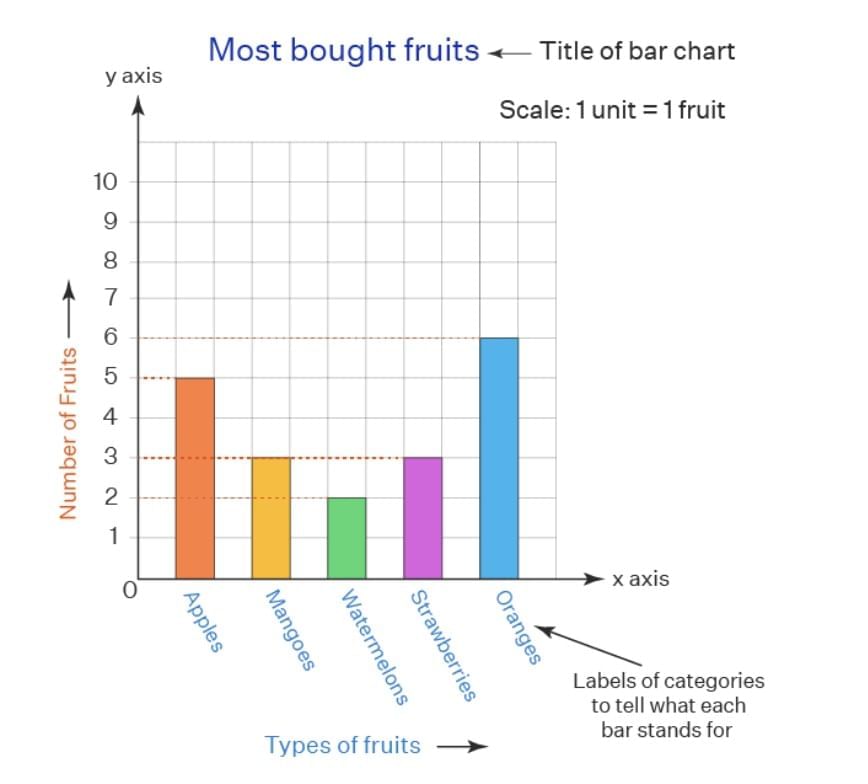
Types
Vertical Bar Graph – bars go up (most common).
Horizontal Bar Graph – bars go sideways.
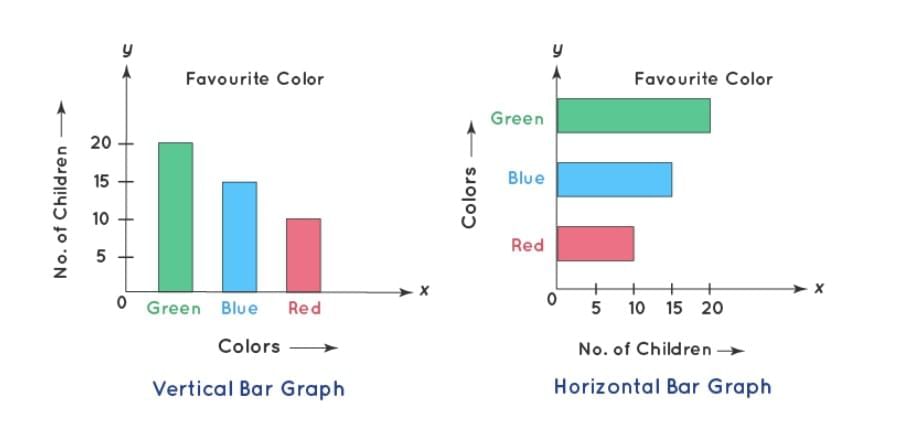
Why Useful?
Easy comparison.
Shows highest/lowest quickly.
Shows patterns (increase/decrease).
Pictograph vs Bar Graph
Pictograph: fun, pictures, less exact.
Bar Graph: neat, bars, exact numbers.
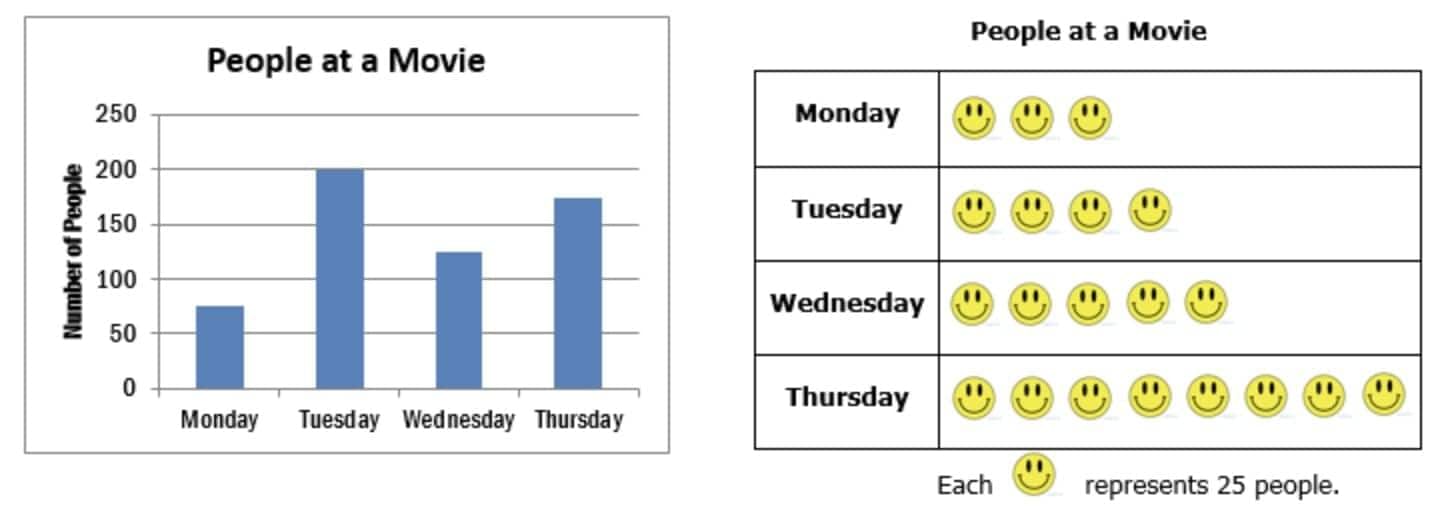
Both are useful depending on situation.
Conclusion
Data can be shown in tables, pictographs, or bar graphs.
Pictographs → simple, visual, quick comparison.
Bar graphs → exact, neat, easy to compare values.
Scales make graphs clearer.
Graphs help us solve real-life problems (time, traffic, wastage).
|
35 videos|276 docs|7 tests
|
FAQs on Important Formulas: Data Through Pictures - Mathematics (Maths Mela) Class 5 - New NCERT
| 1. What is the importance of collecting data in studies and research? |  |
| 2. How can I effectively read and understand tables in data representation? |  |
| 3. What are the key differences between pictographs and bar graphs? |  |
| 4. Why is it important to compare pictographs and bar graphs when presenting data? |  |
| 5. What are some common mistakes to avoid when creating visual data representations? |  |



















